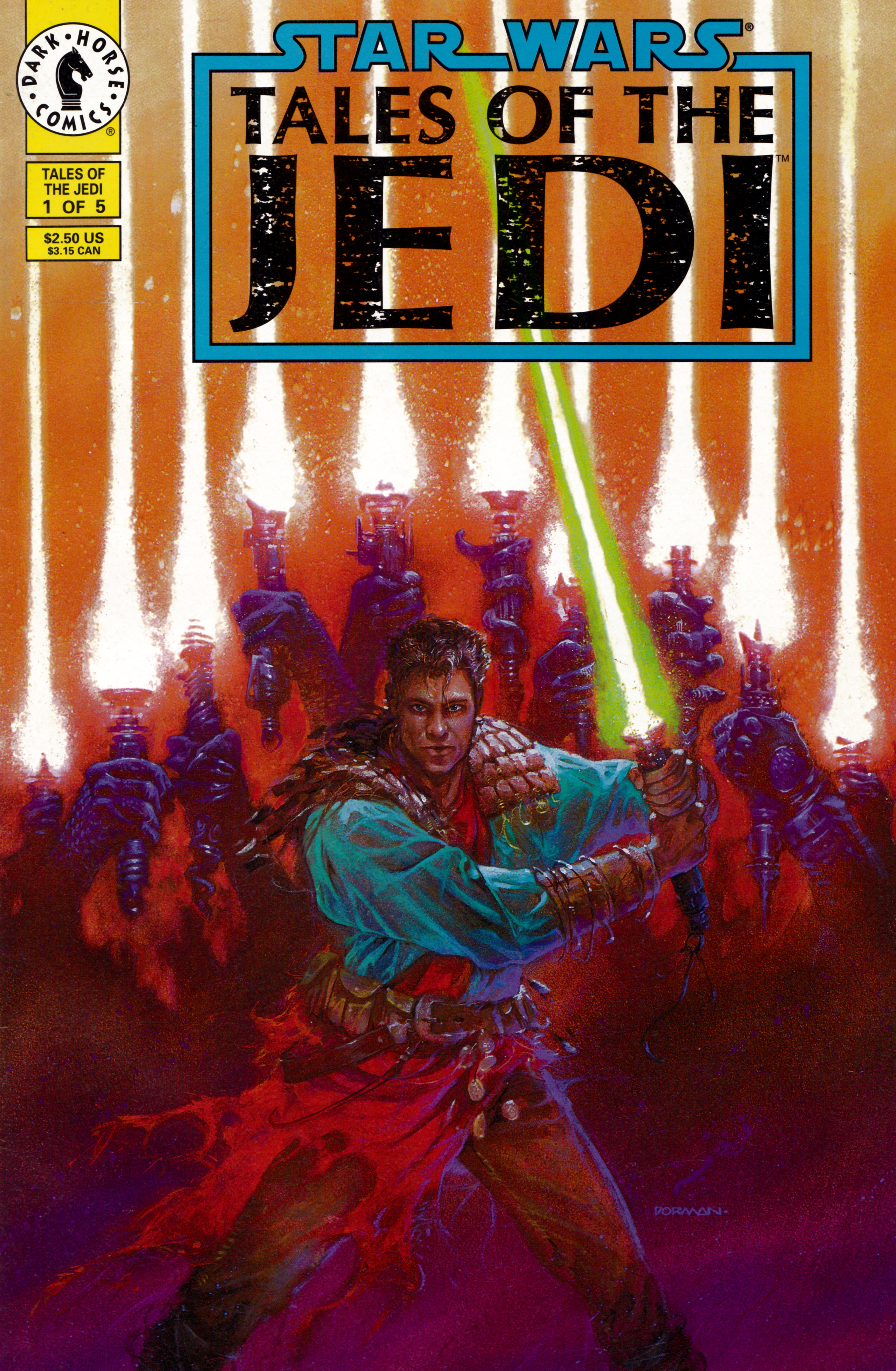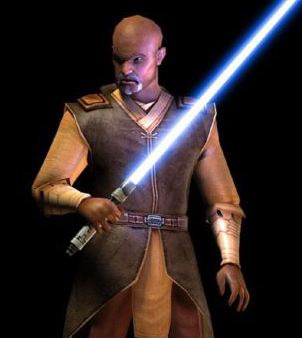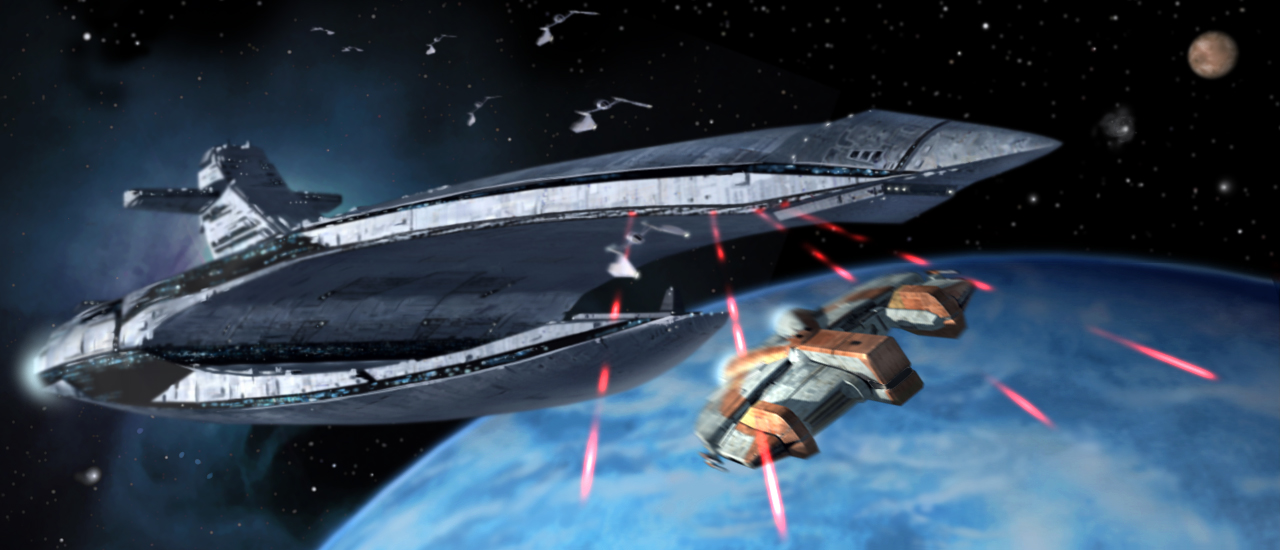
The current state of the Expanded Universe is unsettled, at best. A cursory look at the upcoming publishing schedules for just about any type of media reveals little on the horizon, as the franchise seems to hold its breath for the sequel trilogy’s arrival. It’s not clear that the Expanded Universe we have come to know will survive. The recent revelation that the films will be set about thirty years after the original trilogy suggest that at least some of the post-Return of the Jedi EU will be lost.
It’s general consensus that the material set before Return of the Jedi is likeliest to survive, because there’s less probability of the sequels contradicting it. Perhaps the least likely sources to be contradicted are those set well before any of the films and essentially unconnected to them. This suggests that the Expanded Universe should be concentrating its efforts there if it doesn’t want them wasted.
Currently, The Old Republic, EA’s massively multiplayer online roleplaying game, is set in the Republic’s distant past, thousands of years before the films. It looks likely to continue on as an important segment of the franchise for the next several years, and it likely can get by due to its setting.
The obvious tack for this article, then, would be to suggest concentrating EU resources on the era of The Old Republic. But that argument pretty much writes itself without my spending any further time on it, and I’d rather make a little bolder suggestion: revive the era of Knights of the Old Republic.
The Old Republic‘s setting is built around an ongoing game, the nature of which forces canon to remain murky on the player’s role in the setting. This has kept most of the tie-ins so far focused on backstory or spin-off action held at a remove from the game’s main action, starring original characters or, if you’re lucky, a few game NPCs. It’s also an era with a fairly constrained narrative: a grinding war between Sith and Republic, a truce and cold war in which little provocation could be given, and during the time of the game, an outbreak of new conflict.

Move a few hundred years earlier on the timeline, however, and the constraints are gone. There’s nothing to dance around anymore, and most importantly — the reason I would have still written this article had the Expanded Universe been carrying on normally — it is an incredibly rich setting, the only time period outside the movie era to have accumulated layers of depth, a significant supporting cast, and multiple story angles. It also has tremendous name recognition.
The Expanded Universe has been plumbing this particular stretch of time for some twenty years. It began with Tales of the Jedi, the revolutionary comic series that probed four thousand years into the films’ past to tell the story of a golden age of heroic Jedi battling two of their own, fallen to become Dark Lords of the Sith — and then backtracked another thousand years to tell of the downfall of the original Sith. The other additions to the era have been set a few decades after Tales of the Jedi, with the massively popular Knights of the Old Republic video games, one of the few EU products to reach a mass audience, telling of another Sith war and its fallout, with a backstory in an intervening Mandalorian War, during which the Knights of the Old Republic comic was set.

The end result of these various ventures into this roughly fifty-year age is that we know enough about enough different aspects of a significant era to ground a great variety of stories. The EU has established a plentiful collection of leading figures among the Jedi for this period and beyond, in each direction. From Masters Thon, Arca Jeth, and Vodo-Siosk Baas to the Exile’s Lost Jedi, and all the Knights and Masters in between, the era is certainly not hurting for a variety of Jedi. There are also military figures, like Admirals Karath, Dodonna, and Onasi. Scoundrels, crime lords, and Mandalorians are all in place. The wars are outlined, the major criminal organizations known, and even settings particularly associated with the era, like Dantooine, Taris, Korriban, and Manaan, are well-established. We even have a good handle on events surrounding the era thanks to the Great Hyperspace War one thousand years previously and The Old Republic a few hundred years later bookending the period.

There is a great deal there to work with in any direction an author might want to spin off. Story hooks, from the Republic’s instability amid a Jedi Purge after the Jedi Civil War, to Jolee Bindo’s backstory, to the Mandalorian War, to Vima Sunrider’s destiny, abound. In much the same way that the Star Wars films provided a bevy of familiar faces and names on which the EU could build a larger universe, the existing EU sources, especially the video games, have done a tremendous job of introducing dozens and dozens of familiar names and faces to audiences with which further works can run. The games’ large complement of companion NPCs in particular provides a ready-made core of leading characters, and I’ve pointed out in the past just how much it means to have that kind of significant unified cast.
Much more so than other eras, like the 1000 BBY period, with its limited focus on Darth Bane, or the Legacy era, with its reliance on a single comic title, the KOTOR era has been built up into a period ready-made to tell stories of all kinds, a rich playground in which authors can do just about anything they want.
And it’s not just that potential that makes the KOTOR era the right way to go. It’s the fact that the public will follow the EU there. The Knights of the Old Republic video games were smash successes, still popular all these years later, critically well-regarded, and reaching an audience well beyond the typical EU readership. Of all the Expanded Universe material in the past fifteen years, KOTOR is the only element likely to be both known and beloved by the casual fan on the street. The rest of the elements for the era aren’t entirely obscure, either. Tales of the Jedi, hailing from the early days of the EU, is among the better-known Star Wars comics, and while Exar Kun and Ulic Qel-Droma may no longer have the cachet they once had, they’re not unknowns, either. The Knights of the Old Republic comic is also one of Dark Horse’s most successful and longest-running titles of the past decade; for a Star Wars comic, it has a good in-built audience. There’s reason to think, then, that the general public and hardcore EU fans alike could be attracted to the era once more with tie-ins to those properties.

The Old Republic: Revan has already tested these waters with a novel set in the era and positioned as a tie-in to The Old Republic. It was a bad novel, but a good start to nudging audiences back toward the adventures of Revan and his contemporaries. There’s a lot more room for books and comics to maneuver in the era, though, a vast, well-prepared canvas on which to paint.
The biggest splash that LFL could make would be to finally make Knights of the Old Republic III, of course. Initial plans to do so were dropped in favor of The Old Republic when LucasArts decided to go after the MMORPG pot of gold. Now, however, with it clear that The Old Republic is not going to knock World of Warcraft off its perch and start printing money, while BioWare RPGs like Mass Effect and Dragon Age, built on the model of KOTOR, do good business, and with the Star Wars license firmly in the hands of BioWare’s parent EA, it makes more sense than ever to return to the KOTOR brand and single-player RPG model for a guaranteed blockbuster.
Even without a game, however, the era is ripe for exploitation, especially in the current uncertainty-provoked EU void. It would be a shame if such a rich, well-developed, widely-known, and beloved setting wasn’t further developed to its full potential. A return to the age of Tales of the Jedi and Knights of the Old Republic is the smart way for the Expanded Universe to go.

http://brickset.com/article/10665/darth-revan-polybag-found-in-czech-republic
LEGO is apparently releasing a Darth Revan minifigure
While KOTOR III makes a lot of sense, and could even tie into TOR by being set during the First great Galactic War (capturing the Dread Masters perhaps?) I don’t see it happening. First, the economics of large single-player rpgs are far less forgiving than they were a decade ago and the industry has shifted towards an ‘action-RPG’ model or to ever-more MMORPGs. Second, large-scale RPGs have significant development lead time. Even if work had been started on KOTOR III last year it wouldn’t be ready prior to the release of Episode VII. In fact, Bioware’s development team is probably already working on tie-in products for the new movies, or if not will be very soon.